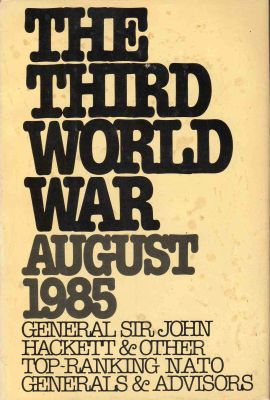
[This article was originally posted on 5 August 2016]
The seeming military resurgence of Vladimir Putin’s Russia has renewed concerns about the military balance between East and West in Europe. These concerns have evoked memories of the decades-long Cold War confrontation between NATO and the Warsaw Pact along the inner-German frontier. One of the most popular expressions of this conflict came in the form of a book titled The Third World War: August 1985, by British General Sir John Hackett. The book, a hypothetical account of a war between the Soviet Union, the United States, and assorted allies set in the near future, became an international best-seller.
Jeffrey H Michaels, a Senior Lecturer in Defence Studies at the British the Joint Services Command and Staff College, has published a detailed look at how Hackett and several senior NATO and diplomatic colleagues constructed the scenario portrayed in the book. Scenario construction is an important aspect of institutional war gaming. A war game will only be as useful if the assumptions that underpin it are valid. As Michaels points out,
Regrettably, far too many scenarios and models, whether developed by military organizations, political scientists, or fiction writers, tend to focus their attention on the battlefield and the clash of armies, navies, air forces, and especially their weapons systems. By contrast, the broader context of the war – the reasons why hostilities erupted, the political and military objectives, the limits placed on military action, and so on – are given much less serious attention, often because they are viewed by the script-writers as a distraction from the main activity that occurs on the battlefield.
Modelers and war gamers always need to keep in mind the fundamental importance of context in designing their simulations.
It is quite easy to project how one weapon system might fare against another, but taken out of a broader strategic context, such a projection is practically meaningless (apart from its marketing value), or worse, misleading. In this sense, even if less entertaining or exciting, the degree of realism of the political aspects of the scenario, particularly policymakers’ rationality and cost-benefit calculus, and the key decisions that are taken about going to war, the objectives being sought, the limits placed on military action, and the willingness to incur the risks of escalation, should receive more critical attention than the purely battlefield dimensions of the future conflict.
These are crucially important points to consider when deciding how to asses the outcomes of hypothetical scenarios.

Very good comment. IMHO – the combat part of a war-game seems to be more exciting and so gets more attention. Participants are impatient to get to it and neglect the wider scenario which dictates the battlefield objectives, constraints etc and so a lack of realism results. I hope we hear more on this topic as it is my main focus and I am interested in how to incorporate the wider scenario into the war-game at the scenario creation stage.